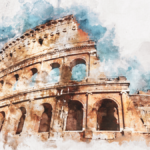Historical landmarks and cultural sites in the Destination tell story of the region’s past. Among these treasures is the famous Monument Y, a towering representation of the city’s centuries-old legacy and resilienresiliencee the complex architecture of Z Castle, a stronghold that formerly protected the city’s boundaries. Old Town’s picturesque cobblestone streets, which lead to bustling marketplaces and historic cathedrals, also provide a window into the area’s colourful past. All who stroll through Destination X’s storied alleys can guarantee themselves an amazing voyage through time and culture, exploring from the ancient ruins of Q Temple to the magnificent gardens of W Palace.
Table of contents
- Historical Landmarks
- Cultural Sites
- Iconic Monuments
- Architectural Treasures For Historical Landmarks And Cultural Sites in Destination
- Heritage Sites For Historical Landmarks And Cultural Sites in Destination
- Historical Architecture For Historical Landmarks And Cultural Sites in Destination
- Cultural Landmarks
- Frequently Asked Questions
Historical Landmarks
Historical landmarks categorize a broad range of buildings, destinations, and monuments noted for their historical, cultural, or architectural value. These historical sites provide concrete connections to the past and provide an understanding of the cultures, occasions, and triumphs that have influenced our world. Historical sites, which range from medieval castles and ancient ruins to famous monuments and historic buildings, offer priceless chances for discovery, learning, and appreciation of our shared past.
Cultural Sites
These locations include a broad variety of establishments that add to the diversity and depth of human culture, such as theatres, museums, art galleries, and houses of worship. By conserving objects, works of art, and performances that honour the cultural identity and legacy of a community or region, cultural places act as archives of creativity and knowledge. People can develop a greater appreciation for other cultures, encourage communication and interaction between other communities, and have a deeper understanding of other cultures through their exploration and interaction with cultural sites.
Iconic Monuments
Iconic monuments serve as enduring representations of human ingenuity, success, and cultural importance. These amazing monuments captivate the imagination and adoration of people all over the world, often embodying the identity and essence of a city, country, or civilization. Iconic monuments, ranging from majestic statues and tall skyscrapers to historic sites and ancient temples, leave an enduring effect on individuals who view them. Whether they are architectural wonders, historical sites, or works of art, these monuments evoke amazement, pride, and awe, bridging space and time to bring people together in a celebration of human creativity and desire.
Architectural Treasures For Historical Landmarks And Cultural Sites in Destination
Architectural treasures are structures that are significant because of their historical, cultural, or aesthetic value. Some of the most famous architectural treasures include:
- The Taj Mahal is an ivory-white marble mausoleum on the south bank of the Yamuna River in the Indian city of Agra. In 1632, the Mughal emperor Shah Jahan (reigned 1628–1658) commissioned it to house the tomb of his favourite wife, Mumtaz Mahal, and his own tomb. This 17-hectare (42-acre) complex includes a mosque and a guest house, set in formal gardens bounded on three sides by a crenellated wall.
- The Great Wall of China consists of a series of fortifications constructed from stone, brick, wood, and earth. It is one of the most famous architectural wonders in the world.
Various dynasties built the Great Wall over centuries to protect the Chinese Empire from nomadic raiders coming from the Eurasian Steppe. - The Colosseum is an oval amphitheatre in the centre of the city of Rome, Italy. Constructed of concrete and tuff, the Colosseum stands as the largest amphitheater ever built and remains in use today. It hosted gladiatorial contests and public spectacles, including animal hunts, executions, and battle re-enactments.
- The Pyramids of Giza are a group of three pyramid complexes located on the Giza Plateau in Egypt.
Heritage Sites For Historical Landmarks And Cultural Sites in Destination
Heritage sites are physical representations of the cultural heritage and history of all people. These sites include a wide variety of locations, each significant for its own cultural, historical, or natural worth, such as historic structures, natural landscapes, archeological ruins, and cultural monuments. Heritage sites—whether recognized by UNESCO or treasured locally—act as essential conduits to the past, conserving customs, tales, and objects that help us make sense of our origins and identity. By preserving these locations, we not only pay tribute to our forefathers and their accomplishments but also make sure that coming generations will be able to enjoy and benefit from the diversity and depth of our world heritage.
Historical Architecture For Historical Landmarks And Cultural Sites in Destination
Historical architecture includes the various forms, methods, and styles that civilizations have evolved. A physical record of human invention, inventiveness, and cultural identity can be found in historical architecture, which ranges from ancient temples and medieval castles to Renaissance palaces and modernist skyscrapers. These architectural wonders provide insights into the goals and accomplishments of earlier societies by reflecting the social, political, and religious values of their day. Studying historical architecture helps us understand the artistry, engineering, and workmanship that have moulded our built world and continue to awe and inspire admiration in people of all ages.
Cultural Landmarks
Cultural monuments are tangible or metaphorical expressions of the identity, values, and beliefs of a community. Many different buildings, locations, and monuments with cultural significance are included in this list of landmarks, including theatres, museums, historic districts, and places of worship. They act as hubs for community meetings, cultural expression, and the preservation of customs and history. Cultural landmarks are essential for forming shared memories, creating a feeling of community, and advancing cross-cultural dialogue and comprehension. Cultural landmarks enhance our lives, stimulate innovation, and add colour to the rich tapestry of human civilization via their preservation and celebration.
Frequently Asked Questions
The opening hours vary depending on the season. Generally, we are open from [Opening Time] to [Closing Time]. Please check our website or contact us directly for the most up-to-date information.
Yes, there is an entrance fee. There may be discounts available for students or groups. Please refer to our website for detailed pricing information.
Yes, we offer guided tours led by knowledgeable experts. You can book a tour by visiting our website and selecting the desired date and time. Alternatively, you can inquire at our visitor center upon arrival.
We strive to make our site accessible to all visitors. We have wheelchair ramps, accessible restrooms, and designated parking spaces. Please let us know in advance if you require any specific accommodations, and we will do our best to assist you.
Yes, we have restrooms located [Location], a café serving [Description of Food/Drinks], and a gift shop offering [Description of Items]. These amenities are conveniently situated within the vicinity of the site for your convenience.




